The Humpback Whales of Tonga by Don Silcock
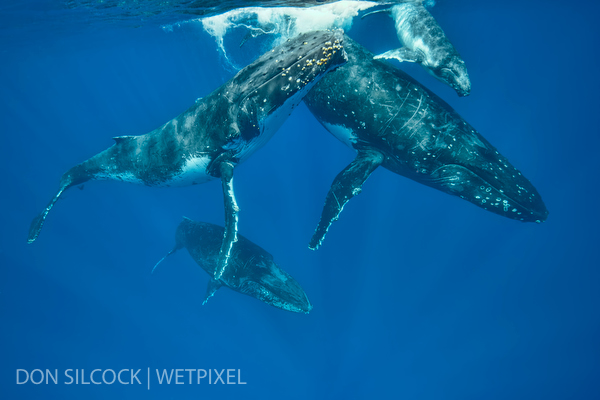
I had read a lot about them, spoken to numerous people who had been in one, but have to admit I was pretty tense sat on the side of the speeding boat about to experience the real thing…
My three weeks in Tonga was almost over this was looking like the final roll of the dice if I was to experience the full gamut of humpback whale “encounters” as they are called – interactions in the water with one of the largest creatures in the world.
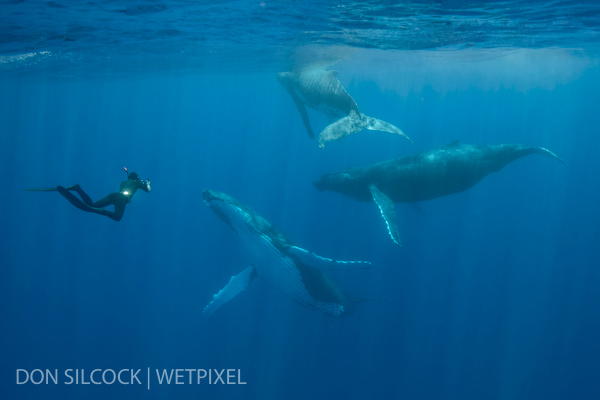
The heat run is probably the most intense of all the encounters and is initiated when a single female humpback whale signals that she may be ready to mate, which she does that by repeatedly slapping her huge pectoral fins on the surface of the water.
For any male whales in the area this is the siren call they have been waiting for, in fact it’s the basic reason they have swam over 6000km from their rich feeding grounds in the Antarctic to the Tongan archipelago in the western Pacific Ocean!
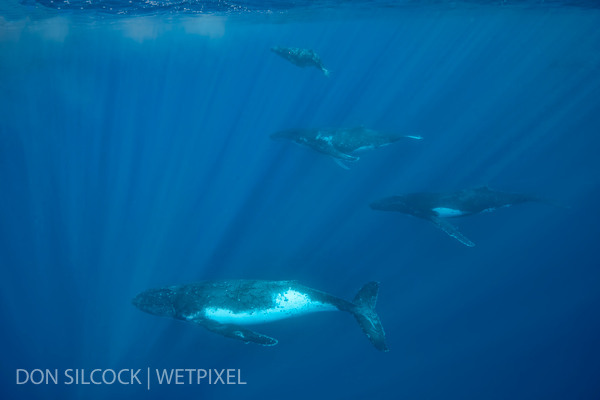
But… to win the grand prize and be the one to mate with the lone female the male humpbacks know they will have to duel with and outwit all the other hopeful aspirants. It is a truly Darwinian contest that only the strongest and most capable males have a chance of winning - thus ensuring the purity of the blood-line.
Heat runs with up to 14 male whales chasing a single female have been observed. Do the math… each of those animals is around 14m long and weighs about 35 tons, which means there is a potential physical presence of over 500 tons of large mammals swimming at speeds that can reach 15mph and all focused on one thing – procreation!
Suddenly the engines stop and the skipper is shouting at the top of his voice “in position - go, go, go” and go we do - straight in to the deep blue water, cameras held in vice-like death-grips and in to the path of the heat run! To say that it is a seminal experience would be something of an understatement… I can honestly say that in over 30 years of diving I have never seen anything quite like it!
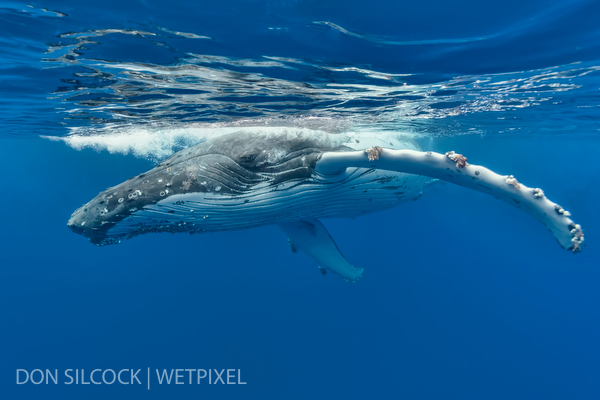
Positioned properly you will be in the water about 100m in front of the whales as they appear out of the blue looking like a small armada of submarines, coming right towards you with the female in the lead and the males in a pack behind. The males are jostling and maneuvering for position with some trying direct charges at their rivals to try and knock them out of the race, while others will try a covert approach by diving down and blowing a bubble curtain up in to the path of a male to try and disorientate him.
There is a lot of kinetic energy going around and the heat run can go on for hours till it is all exhausted and the female is finally alone with the winner, which means that if you are lucky and have a good skipper you can get multiple “drops” as the whole spectacle unfurls before you!
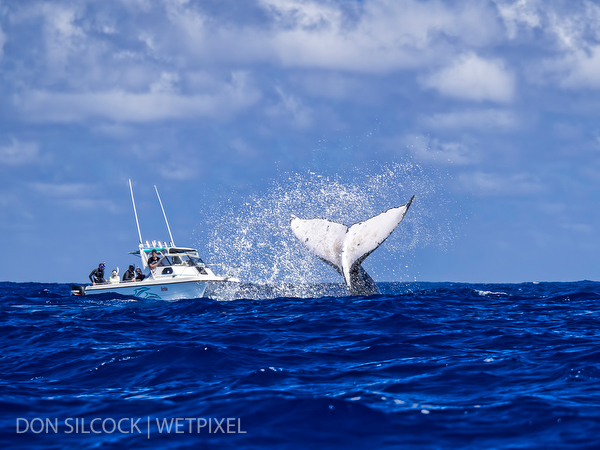
I had wanted to go to Tonga for a few years having heard great things about the humpback encounters, but it’s not the easiest thing to organize and the country is a long way from everywhere.
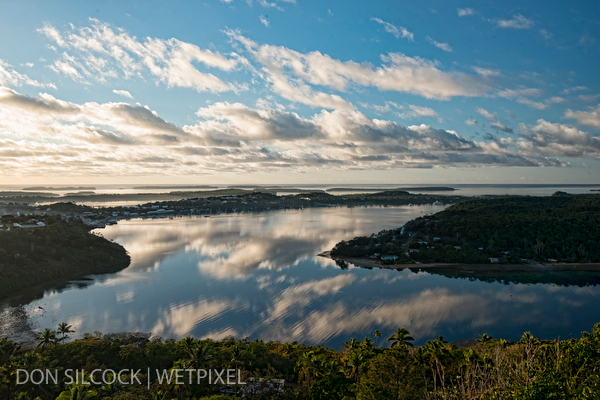
I finally did it on my third attempt and last year I spent nearly three weeks in Neiafu, the main town in the Vavu’a island group in the north of the archipelago, where the majority of the whale watching takes place.
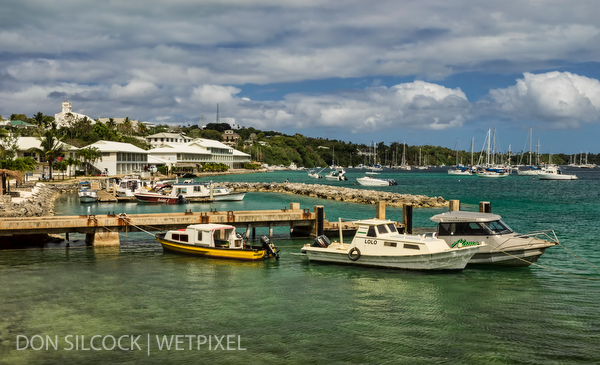
In the whale season, from mid-July through to early October, the boats leave Neiafu’s scenic Port of Refuge harbor every day but Sunday (Tonga is very religious and by law nothing happens but church on a Sunday…) to search out the whales that gather in and around the 41 islands that make up the Vavu’a Group.
The prevailing winds are from the south-east, which means that the bays on the north-western side of the Vavu’a group are sheltered most of the time providing many calm water areas for the humpback mothers and their calves to gather. The gestation period of humpback whales is 11.5 months and the pregnant females migrate all the way back to Tonga to give birth in the warm, sheltered waters of the archipelago.
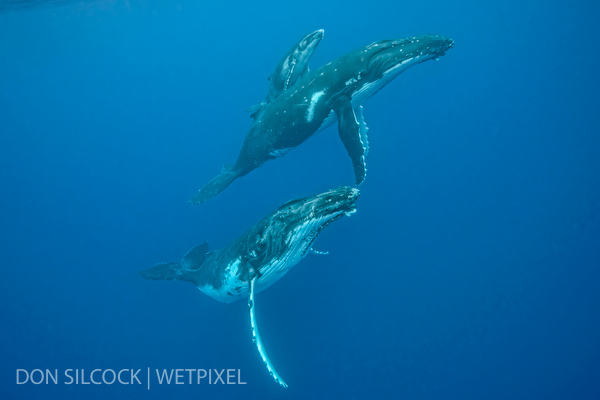
Those sheltered bays provide the perfect spots for the mothers to recover their strength after giving birth and feed their young calves as they prepare it for the journey south again at the end of the season. The bays also provide reasonable protection from the many predators whose modus operandi is to separate the vulnerable calf from its mother and then kill and eat it!
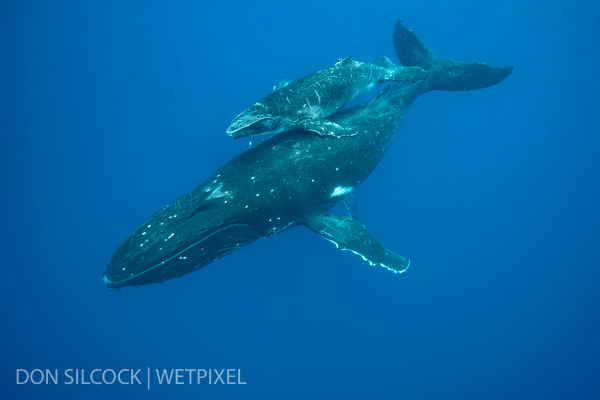
What this all means for whale watching is that even on the worst weather days it is usually possible for the whale-watching boats to go out and look for mother and calf pairs in the bays, but if the wind changes it means the large lagoons and open waters to the south can be accessed and that is where the heat runs usually happen!
So the chances are always pretty good for a whale encounter – be it the intensity and incredible excitement of a heat run or the heart-warming observation of a mother and her calf.
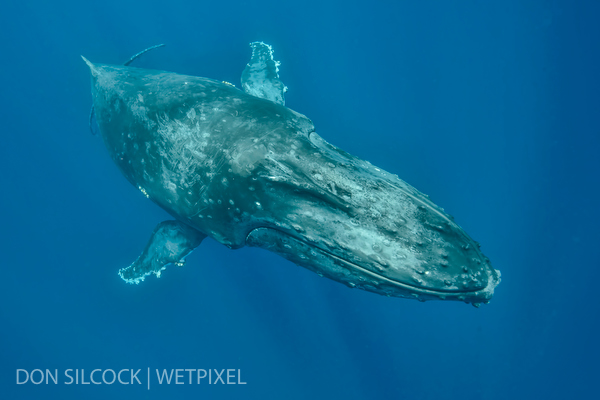
In between there are the close encounters with the mature “escort” whales who guard and protect the mothers and calves by running interference between them and the perceived threat (you…), which provides for some stunning photo-opportunities.
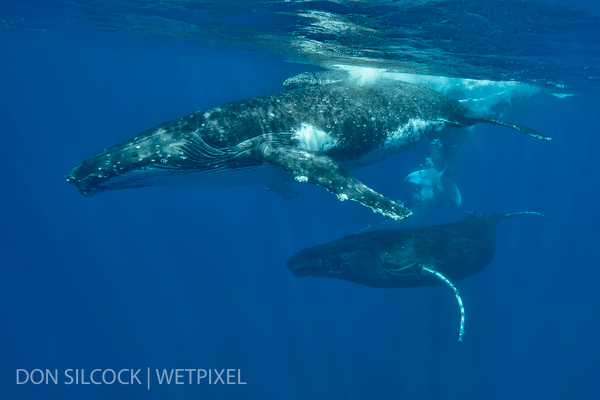
Or the “competitive groups” where an interloper tries to force out an incumbent escort whale, producing some spectacular interactions as the candidates fight it out and the mother does her best to protect her calf.
Then there are the “singers” – the male whales who produce the incredible whale songs that travel huge distances underwater and are believed to play a part in the mating process. Humpbacks don’t have any vocal chords, but the singers produce their complex “songs” by circulating air through the various tubes and chambers of their respiratory system while in a vertical position in the water.
The singers remain almost completely motionless in a vertical position when this happens and they appear to enter an almost zen-like state.
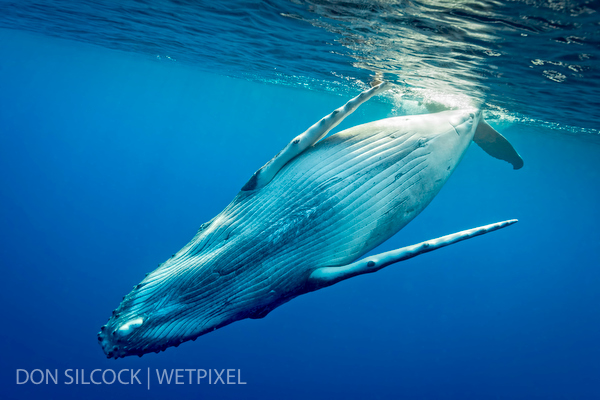
Finally there are the “playful calf” encounter which happens when the calves have started to grow in both size and confidence.
They will come and check you out in much the same way as a young puppy might, but the difference is that they may be young but they are really big… So, if there is an element of danger from being in the water with humpback whales, the playful calf is about as bad as it gets as they have very little spatial awareness and can easily hit you with a tail swat.
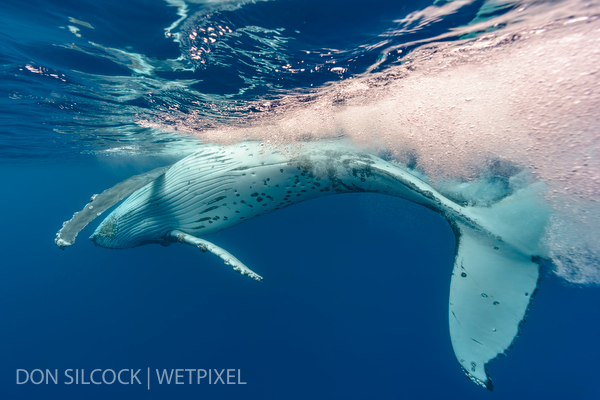
The mature humpbacks however are truly gentle giants and seem to know where you are at all times, posing very little danger – even during a heat run, when they simply go round or under you.
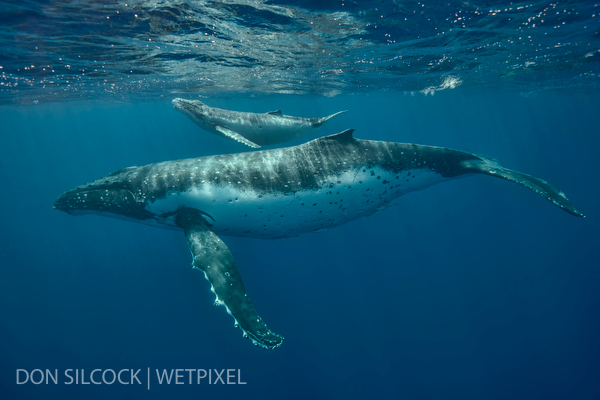
My three weeks in Tonga flew by and I learned so much about these incredible creatures from seeing them in the water and then researching the behavior I had observed.
I have documented what I learned on my site and if you are interested in understanding more about the Tongan humpback whales, their annual migration and the incredible encounters possible please follow this link.